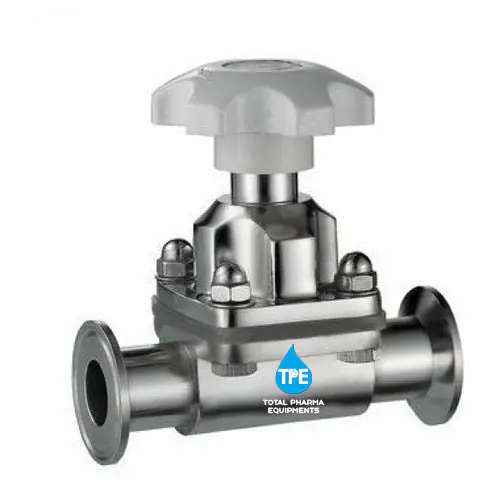
DAIPHRAGM VALVE
- Nominal Size:
- Diaphragm valves come in various nominal sizes to accommodate different flow rates and pipe diameters. Sizes can range from small valves for laboratory applications to large valves for industrial processes.
- Connection Type:
- Diaphragm valves are available with different connection types, including threaded, flanged, socket weld, and sanitary connections. The choice of connection type depends on the specific requirements of the piping system and the application.
Description
- Versatility:
- Diaphragm valves are versatile and suitable for a wide range of applications, including pharmaceuticals, water treatment, chemical processing, and food and beverage industries. They can handle a variety of fluids, including corrosive and abrasive materials.
- Bubble-Tight Shut-Off:
- Diaphragm valves provide bubble-tight shut-off, preventing the leakage of fluids when the valve is closed. This feature is crucial in applications where leak-tight sealing is essential.
- Corrosion Resistance:
- Diaphragm valves are often constructed from corrosion-resistant materials such as stainless steel, PVC, or plastic, making them suitable for use with corrosive substances.
- Abrasion Resistance:
- The flexible diaphragm design of the valve allows it to handle abrasive materials without excessive wear. This makes diaphragm valves suitable for applications involving slurries and abrasive fluids.
- Bi-Directional Flow:
- Many diaphragm valves are designed to handle bi-directional flow, providing flexibility in controlling the direction of fluid flow.
- Low Maintenance:
- Diaphragm valves are known for their low maintenance requirements. The simple design, with fewer moving parts, contributes to their reliability and ease of maintenance.
- Ease of Operation:
- Diaphragm valves are generally easy to operate. They can be manually operated with a handwheel or lever, or automated with pneumatic or electric actuators for remote control.
- Regulatory Compliance:
- Diaphragm valves can be designed to comply with industry standards and regulations. This is important in industries where adherence to specific standards is necessary for quality control and safety.
- Controlled Flow:
- Diaphragm valves offer precise control over the flow of fluids. The throttling capabilities make them suitable for applications where precise flow control is required.
- Resilient Sealing:
- The diaphragm acts as a resilient seal, allowing the valve to maintain a leak-tight seal even in the presence of particles or debris in the fluid.
- Good for Viscous Fluids:
- Diaphragm valves are effective in handling viscous fluids due to their ability to provide a positive seal.
- Reduced Water Hammer:
- The design of diaphragm valves can help reduce water hammer effects, which is beneficial in applications where sudden pressure changes may occur.
- Throttling Capability:
- Diaphragm valves can be used for throttling applications, allowing for precise control of flow rates.
- Hygienic Design:
- In industries like pharmaceuticals and food processing, diaphragm valves can be designed with sanitary connections and smooth surfaces to meet hygienic standards.
- Zero Contamination:
- The diaphragm isolates the fluid from the valve body, preventing contamination and ensuring the purity of the transported material.
- Wide Temperature Range:
- Diaphragm valves can operate in a wide temperature range, making them suitable for applications involving extreme temperatures.
- Durable Construction:
- Diaphragm valves are often constructed from durable materials, ensuring longevity and resistance to wear and corrosion.
- Shock-Resistant:
- Diaphragm valves are less susceptible to damage from water hammer or sudden pressure changes, making them suitable for applications with fluctuating pressure conditions.

